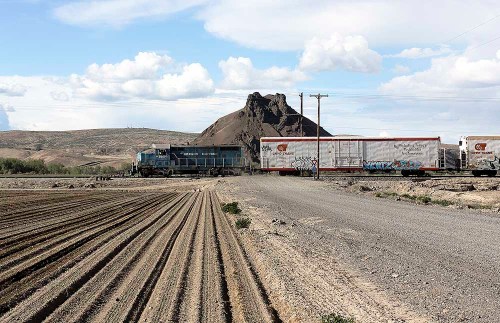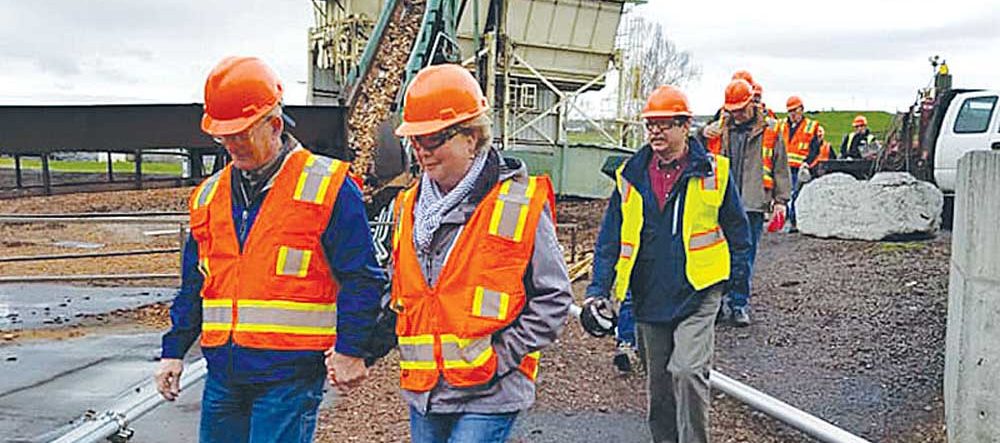Oregon Eastern RR opposes Treasure Valley Reload Center plan
Published 9:45 am Tuesday, July 9, 2019

- Short-line Oregon Eastern Railroad is based in Vale and interchanges cars with Union Pacific Railroad in Ontario.
NYSSA — Oregon Eastern Railroad managers oppose a state-backed plan to build the intermodal Treasure Valley Reload Center in the region and says its infrastructure is better-suited and underused.
Vale-based OERR is a short-line railroad with 23 miles of track and other infrastructure. It interchanges cars daily with the Union Pacific Railroad in Ontario.
The 2010 Oregon Rail study and 2014 Rail Plan list the line as an “at-risk corridor” due to low traffic volumes, OERR Senior Vice President Bruce Carswell said in a June 12 letter to the state Transportation Commission and Department of Transportation opposing the Treasure Valley Reload Center.
“The OERR is very supportive of economic development for this region and we agree with the merits and concept of the project,” he said of the Treasure Valley Reload Center. “However, we oppose this project for a variety of different reasons.”
The truck-to-train cargo transfer and shipping center, planned north of Nyssa, “is highly likely to cannibalize business opportunities from the (OERR) rail line, endangering its continued survival,” Carswell said. “It does not seem to be an effective use of taxpayer dollars to fund a new operation that will directly compete with a state-identified ‘at-risk’ rail line that has also received Connect Oregon grants.”
Class 1, high-revenue railroads such as Union Pacific can amortize trip costs over long distances. Getting crops and other cargo out of trucks and into long-haul railcars sooner is the main idea behind intermodal trans-load facilities like Treasure Valley Reload and two under consideration on the state’s west side.
State transportation officials are scrutinizing the financial viability before committing $25 million to one in the Willamette Valley and $26 million for the Treasure Valley facility.
In Oregon Eastern’s current overcapacity, “one factor would be that there are some short-haul markets, particularly to the Pacific Northwest ports for export shipment of agricultural products, where rail rates are not competitive with trucks,” Vice President of Business Development Ed Pajor said.
“We’ve got a lot more capacity on our line to handle freight,” he said. “And depending upon how big of an opportunity presents itself, we are open to expanding our operations and facilities based on the return on investment and the specifics of those opportunities.”
Using existing Oregon Eastern capacity or expanding it as needed is more cost-effective than building the Treasure Valley Reload Center, Pajor said, because OERR has a business relationship with and physical connection to Union Pacific as well as established processes that would streamline new construction.
OERR’s capacity would be sufficient for trans-load operations, at least to start, he said. “We have spur tracks and team tracks that can be used to load product today.”
If the railroad needs to add infrastructure or a business wants to build, “there are parcels adjacent to our main line that would be perfect,” Pajor said. “Property is available to put a large trans-load operation in place.”
Carswell said Treasure Valley Reload’s site selection “did not properly assess connectivity issues” with the rail system and Interstate 84. He said the site north of Nyssa would require an expensive cut-in link including new track, signal and Positive Train Control safety investments.
“All this could be avoided by locating on OERR,” he said. “Furthermore, OERR has more flexible criteria for new rail connections, which would reduce track construction costs, engineering approval processes and time for construction.”
Carswell said Oregon Eastern’s repair facility for refrigerated rail cars already is pre-staging empty cars and has capacity for increased traffic.
Malheur County Economic Development Director Greg Smith said the Treasure Valley Reload Center aims to move agricultural commodities on Union Pacific’s main line. If the center were built on a local rail line, the local would need to build spurs “and all we did was put an additional cost on that onion and additional coordination between the two railroads.”
Oregon Eastern would need to add spurs or other infrastructure, but only later if demand exceeds current capacity, Pajor said.
Carswell said OERR was ignored after an initial meeting with Malheur County Economic Development leaders. Smith said the railroad never submitted a formal proposal.
But he said Oregon Eastern could work with the reload center, since UP will not allow cars to sit on its main line.
“Part of our strategic vision all along was to have our local rail operator serve our rail spurs,” Smith said. “We need someone to move the rail cars, and so they would be a natural fit.”








